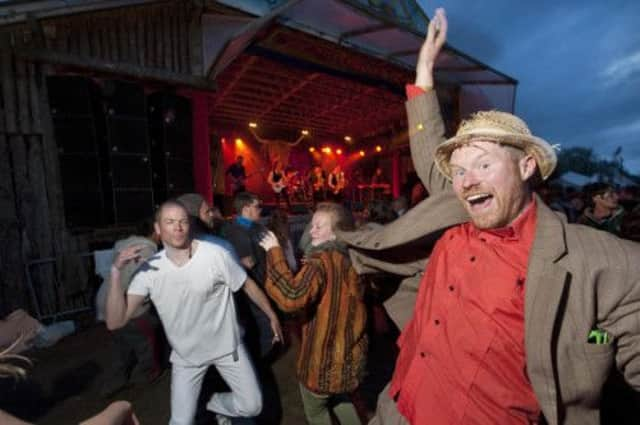Arts blog: Raising the profile of graphic novels


Yet Graphic Scotland, the Scottish comics collective who will launch the first annual 9th Art Award at this year’s Edinburgh International Book Festival, intend to use it to raise comics’ profile, buoyed by a tide of critical opinion that has been rising for decades.
“It’s definitely something to aspire to,” says Padmini Ray Murray, lecturer in publishing studies at the University of Stirling and a Graphic Scotland advisory board member. She is hesitant to describe the 9th Art Award as a graphic novel equivalent of the Man Booker Prize. “We don’t want that to become our tagline,” she says. “But this kind of recognition, having that sticker on your book, right away means more publicity for the book, the creator and the form itself. I think that’s what we’re looking for.”
Advertisement
Hide AdThe 9th Art Award was first suggested by Murray’s fellow board-member, comic creator Gordon Robertson. It will offer an annual prize to the best full-length graphic novel written in English and published between May 2012 and July 2013 anywhere in the world.
Graphic Scotland are still in discussion about what the prize will be (and are looking to speak to possible sponsors, should any be reading), but they’re hoping to offer something which will benefit the careers of the winners. This year’s award, which has been offered space amidst the Edinburgh International Book Festival’s regular graphic novel strand, will be judged by a panel including comics expert Paul Gravett and graphic novelist Mary Talbot.
The 9th Art Award was inspired by the European, particularly French, attitude towards comic books as a serious form of art. It seeks to reflect the spirit of Scotland’s wealth of underground and internationally renowned comic creators, while opening minds to something other than, say, the work of our most prominent export, Mark “Kick-Ass” Millar.
“We felt that if we presented it at a literature festival it would give it a context,” says Murray. “It would also make people who wouldn’t necessarily read graphic novels because ‘it’s not literature’ a bit more aware of the fact that it has matured as an art form.
“I think for someone like me who works at the intersection of print and technology, and it’s obvious that the value of the material artefact is growing. People love beautiful books and obviously the comic and the graphic novel are exemplars of that. Graphic novels encompass genres, you have fiction, journalism, biography – it’s such a rich form that it’s just a question of telling people what’s out there. Resistance is actually weakening, and our point is to tell people that such beautiful things exist.”
• For more information on the 9th Art Award, visit www.9thartfestival.com.
DAVID POLLOCK
Advertisement
Hide AdANDREW EATON-LEWIS EXPLAINS HOW A VISIT TO KNOCKENGORROCH REIGNITED HIS LOVE OF MUSIC FESTIVALS
WHEN it comes to Scottish music festivals, what’s been the biggest success story of the past few years? The most obvious answers might be T in the Park or Celtic Connections, both of which marked their 20th anniversaries this year.
Advertisement
Hide AdHaving just spent my weekend at Knockengorroch World Ceilidh, though, it’s more obvious than ever to me that there’s another, more persuasive answer – the rise of the boutique festival. If you prefer something smaller, more intimate and tailored to particular musical tastes to the overwhelming experience of T in the Park, there is currently an embarrassment of riches on offer in Scotland.
This summer offers the Insider, Eden, Solas, Kelburn, Tiree, Doune the Rabbit Hole and numerous others. And this looks like the way of the future – the programme for the Dunoon Film Festival, a new event launching next month, aspires to match Edinburgh or Glasgow’s film festivals for invention and originality. And Fringe by the Sea, in North Berwick, returns this August to offer some welcome peace from the Edinburgh Fringe. These are not paler imitations of bigger events, they’re alternatives that play to different strengths, and are prospering as a result.
The Knockengorroch World Ceilidh feels a lot like a miniature Glastonbury, with its farmland setting, hippyish atmosphere and an audience who are more colourfully dressed than most of the performers. My personal favourite was a man who was half clansman, half pirate, with a cuddly toy puffin fixed to his shoulder. He didn’t stand out from the crowd at all, which tells you something.
Knockengorroch has a devoted following. Almost all the people I spoke to there have been going for many years – some having met on a Glastonbury online message board – and formed long-term friendships there. Musically it seems more interested in giving you something you’ve not heard before than chasing media and radio-friendly headliners. Within a couple of hours on Sunday I saw a fantastic Ethiopian band called Krar Collective, swing harmony singers the Bevvy Sisters, and two Glaswegian belly dancers. Knockengorroch is also – crucially perhaps, and like so many of these smaller festivals – child-friendly. I lost count of how many baby ear defenders I spotted while there, while older children ran wild and happy among a crowd small and scattered enough not to get lost or injured in.
In describing Knockengorroch as a miniature Glastonbury, I’d argue that, rather than this making it a lesser experience than the real thing, it might actually be a better one. Since when has it been possible to experience the whole of Glastonbury in one trip anyway? When did Glastonbury last genuinely feel like the product of 1960s idealism rather than 1980s commerce? Knockengorroch still does, and should be treasured for that.